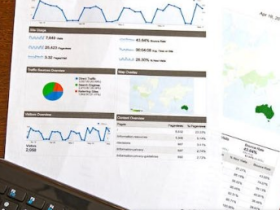Collaborative robots are robots that can collaborate with humans and enhance their capabilities. There are several advantages to using collaborative robots or cobots, including the fact that they are simple to program, install, and add new tasks to when compared to other robots.
The global collaborative robots market was worth $701.56 million in 2021, and it will be worth $2506.90 million by 2030, representing a 15.2% CAGR from 2021 to 2030.
The introduction of 5G technology is also anticipate to boost the use of cobots in the manufacturing sector. Nokia Corporation’s release of an industrial-grade 5G wireless network to meet the requirements of Industry 4.0 is an example of such progress. The 5G wireless solution’s low-latency connectivity will assist OEMs in improving robotic automation and increasing manufacturing processes’ productivity, quality, and efficiency.
Collaborative robots market drivers
- The deployment of collaborative robots results in a high ROI (Return on Investment) and benefits businesses of all sizes in terms of improved product quality, general competitiveness, and increased production. Furthermore, cobots are less difficult to program than other types of robots. These are some of the key factors boosting the global collaborative robotics market.
- Cobots are becoming more affordable than ever before, and they are also simpler to operate and less complicated than devices used for training. It will primarily provide companies with various options, increasing their cobots and allowing industries of varying sizes to remain competitive and sustainable in the overall market.
Market restraints
During the forecast period, the factors expected to hamper the growth of the global collaborative robot (cobot) market are a lack of skilled workforce for cobot operations and limited acceptance of cobot technology. Workers find it difficult to quickly adapt to collaborative robot technology, also known as cobot technology.
Market Opportunity
During the Covid-19 pandemic, this medical industry saw a significant increase in demand for robotics. Furthermore, the sudden rise of the COVID-19 pandemic has accelerated the expansion of the use of robots, particularly for automation purposes in the medical industry. In China, for example, at Shenzhen Third People’s Hospital, a robot named Aimbot drove down the hallways, imposing the social distancing, face-mask, and disinfectant spraying rules. As a result, in the future, there will be a wide range of opportunities for the use of cobots, particularly in the healthcare industry.
Segmentation analysis
- Based on payload capacity, the market is segmented into upto 5kg, up to 10 kg, and above 10 kg.
Due to the machine’s lightweight, flexibility, and ability to enhance various low-weight collaborative processes such as picking, placing, and testing, cobots with an ‘up to 5kg’ payload capacity segment contributed to the largest share of the market in 2020.
- On the basis of end-user, the market is segmented into automotive, electronics & electrical, metals & machining, food & beverages, and others.
The assembly segment contributed the most to the market in 2020 due to its combining repetitive and simple work with many more complex problems associated with overall assembly processes. The
Regional analysis
The collaborative robots market is studied across North America, Europe, Asia-Pacific, and LAMEA.
In terms of both volume and value, the APAC region held the largest collaborative robots market share in 2020. It is primarily due to rising labor costs in the APAC region, forcing manufacturers to automate the entire manufacturing process to maintain their benefits in terms of cost reduction. Furthermore, there is a growing demand for collaborative robots due to factors such as the increasing average age of the workforce, rising wages, the light-weighting trend in the automotive industry, and the emphasis on the miniaturization trend in the electronics industry. Furthermore, with the adoption of artificial intelligence, a greater emphasis on automation, and all other essential technological developments, the collaborative robots market has an extremely large potential to grow rapidly over the forecasted period.
The high Return boosts the collaborative robot market on Investment (ROI) derived from collaborative robot implementation and its benefits for businesses of all sizes in terms of general competitiveness, increased production, and improved product quality. Furthermore, cobots are simpler to program. These factors create the conditions for widespread adoption in small and large businesses.








Leave a Reply